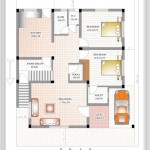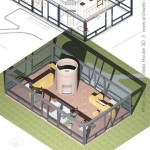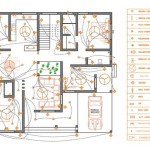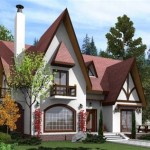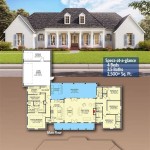Southern Colonial House Plans: A Timeless Architectural Tradition
Southern Colonial architecture stands as a testament to a rich history and a unique blend of European influences adapted to the Southern climate. These homes, often characterized by grand proportions and symmetrical facades, continue to inspire modern home designs. Understanding the key elements of Southern Colonial house plans provides valuable insight into this enduring architectural style.
Several distinct sub-styles fall under the umbrella of Southern Colonial. These include Georgian Colonial, French Colonial, Spanish Colonial, and Tidewater or Lowcountry Colonial. Each variation possesses its own unique characteristics while still adhering to the broader principles of Southern Colonial design.
Georgian Colonial homes, popular during the 18th and early 19th centuries, are known for their symmetrical facades, multi-paned windows arranged in precise patterns, and prominent entryways often featuring pediments or pilasters. These homes typically have two or three stories and are constructed of brick or wood.
French Colonial architecture, prevalent in Louisiana and other areas with French influence, incorporates elements such as wide verandas or galleries that wrap around the house, tall windows and doors with shutters, and steeply pitched roofs. These features offer protection from the sun and rain while promoting airflow in warm, humid climates.
Spanish Colonial homes, common in Florida and parts of the Southwest, feature stucco walls, red tile roofs, arched windows and doorways, and decorative ironwork. Courtyards and fountains are also frequently integrated into the design, reflecting the Spanish emphasis on outdoor living.
Tidewater or Lowcountry Colonial homes, found along the coastal regions of South Carolina and Georgia, are adapted to the hot, humid climate with elevated foundations, wide porches or piazzas designed to capture breezes, and large windows to maximize ventilation. These homes are typically constructed of wood and often feature hipped roofs.
Key features define Southern Colonial house plans. Symmetry is paramount, with the front door often centered and windows evenly spaced on either side. Grand entrances, frequently adorned with columns, pilasters, or pediments, create a sense of formality and elegance.
Spacious porches and verandas are another hallmark of Southern Colonial design. These outdoor spaces provide shade and promote airflow, essential features for comfortable living in hot climates. They also serve as important social spaces for entertaining and relaxing.
Large, multi-paned windows are typical of Southern Colonial homes, allowing ample natural light to fill the interior. Shutters, both functional and decorative, add to the classic Southern charm. These shutters offer protection from the elements and provide privacy.
Interior layouts in Southern Colonial homes traditionally center around a central hallway or staircase. Formal living and dining rooms are common, often located on the main floor, with bedrooms situated on the upper levels. High ceilings and fireplaces add to the grandeur and comfort of these homes.
Modern adaptations of Southern Colonial house plans continue to embrace the classic elements while incorporating contemporary features. Open floor plans connecting the kitchen, dining, and living areas are popular, catering to modern lifestyles. Updated kitchens and bathrooms, while incorporating modern amenities, often retain the traditional aesthetic through the use of classic materials and fixtures.
Choosing a Southern Colonial house plan requires careful consideration of various factors. The specific sub-style should reflect personal preference and the regional context. Lot size and orientation are crucial for maximizing the functionality and aesthetic appeal of the design. Budget considerations should also be factored in, as the complexity and size of the home can significantly impact construction costs.
Working with an architect or experienced home designer is essential for adapting Southern Colonial plans to individual needs and site conditions. Customization options allow for the integration of modern features while preserving the historical integrity of the design. Careful selection of materials and finishes further enhances the authenticity and charm of the home.
The enduring appeal of Southern Colonial house plans lies in their timeless elegance and adaptability. From the grand Georgian Colonial mansions to the charming Lowcountry cottages, these homes offer a glimpse into a rich architectural heritage. By understanding the key elements and variations within this style, individuals can make informed decisions when choosing or adapting a Southern Colonial house plan to create a home that reflects both historical charm and modern functionality.
The variety within Southern Colonial architecture allows for a wide range of interpretations. From sprawling estates to more modest homes, the underlying principles of symmetry, grand entrances, and spacious porches remain consistent. These classic elements, combined with the adaptability of the style, ensure that Southern Colonial homes will continue to grace the landscape for generations to come.

Southern Colonial House Plans Monster

Southern Colonial Home Plan 32444wp Architectural Designs House Plans

Colonial House Plan With 3 Bedrooms And 2 5 Baths 6990

Three Story House Plans 5 Bedroom Colonial Style Home

Plan 052h 0073 The House

Plan 75501 Narrow Lot Southern Colonial House

3 Bedroom 2 Story Southern Colonial House Plan With Study And Wrap Around Porch Charleston Plans Farmhouse Family

House Plan 86114 Southern Style With 2568 Sq Ft 3 Bed Bath

Spacious Southern Colonial 1770lv Architectural Designs House Plans

House Plan 59075 Southern Style With 2501 Sq Ft 4 Bed 3 Bath

